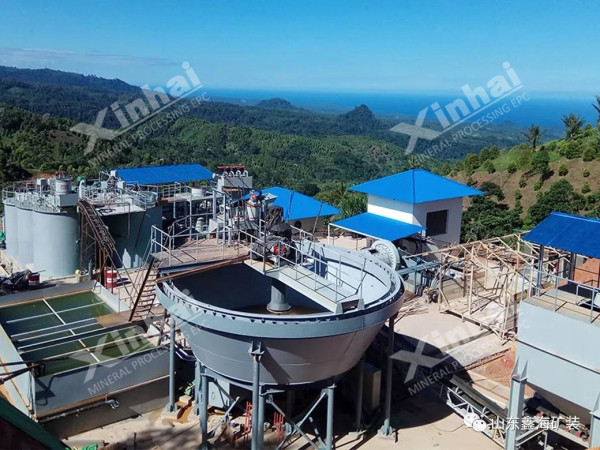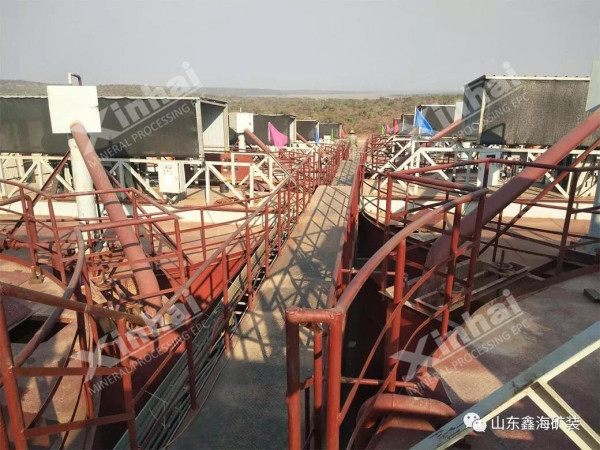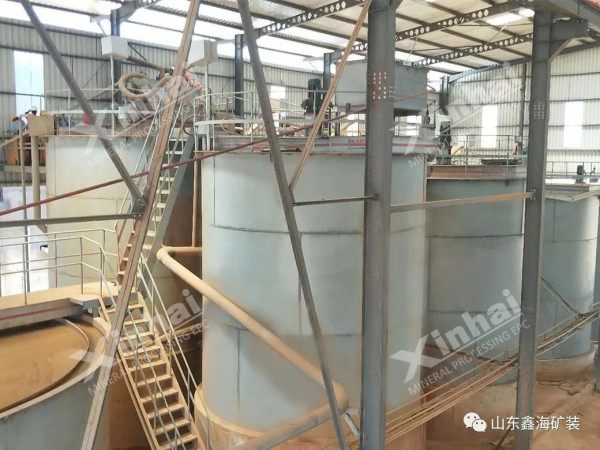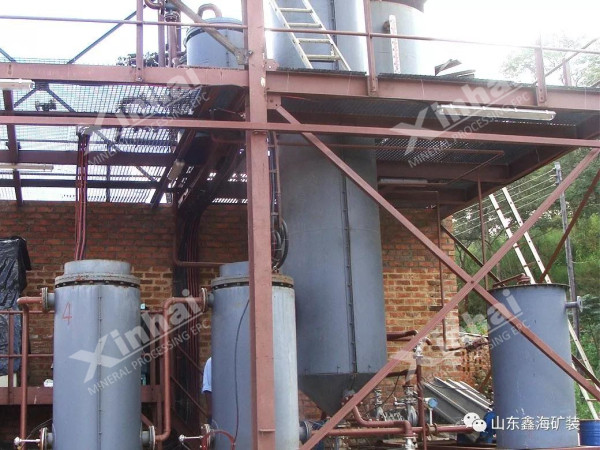There are many kinds of gold ore which are mostly embedded with other metal mineral impurities. If a kind of gold ore is difficult to leach smoothly under conventional conditions by fine grinding, this kind of gold ore is called refractory gold ore. Generally, the Au content of this refractory leaching tailings is >0.5g/t.
The gold in this type of ores, either physically encapsulated or chemically bound, cannot be in contact with the cyanide solution, so it is difficult to be leached out. What are the reasons for the low cyanidation leaching rate of gold mines? And what are the corresponding solutions?

1. Gold ore accompanied by a large amount of pyrite, pyrrhotite, marcasite, etc.
These minerals are associated minerals that consume oxygen, alkali and cyanide. They are easily oxidized and decomposed in the process of cyanidation, producing sulfuric acid, ferrous sulfate, basic ferric sulfate, ferric thiosulfate, etc. All substances react with cyanide or base, causing a large number of oxides, cyanides and bases to be dissolved before gold is dissolved, thereby preventing gold leaching.
Solution
For this kind of problem, the method of pre-aerated alkaline leaching is often used at present. To be specific, before the pulp cyanidation leaching, oxygen is charged in an alkaline medium and stirred at the same time, so that these minerals have enough time for oxidation and hydrolysis and can be converted into insoluble ferric hydroxide. Then adding cyanide can effectively dissolve the gold.

2. Gold ore containing minerals such as carbon or graphite
Some gold ores will have active organic carbon or graphite, etc. Since the carbon contained in the ore is quite active, the phenomenon of "carbon robbing gold" will occur during the leaching process. They will adsorb the dissolved gold, and then precipitated out again, thereby reducing the gold leaching rate.
Solution
For this type of ores, both physical beneficiation and chemical beneficiation can be used according to their carbon content.
Physical beneficiation method: when the carbon content is high, it can be separated by flotation after adding oil; when the carbon content is low, an appropriate amount of organic matter (such as kerosene or coal tar can be added before leaching by utilizing the hydrophobicity of the carbon mineral surface) ), the carbonaceous minerals are "passivated" in advance, so that a film can be formed on the surface that can inhibit the adsorption of molten gold, weaken its ability to absorb gold, and eliminate the influence of carbon on immersion gold.
Chemical beneficiation method: It can be oxidized with sodium hypochlorite in an alkaline medium at 50~60℃ under stirring conditions; or the carbon is oxidized into carbon monoxide and carbon dioxide gas by roasting method, and then the gold is leached by cyanidation.

3. Gold ore containing copper, zinc and other cyanide-consuming minerals
Some gold ores are accompanied by copper and zinc minerals, such as malachite, azurite, chalcocite, sphalerite (especially oxidized sphalerite), etc. These minerals have high solubility in cyanide solution. They rob cyanide and oxygen with gold during cyanide leaching process, thus hindering the dissolution of gold and reducing the efficiency of cyanidation.
Solution
For such cases, different treatment methods should be adopted according to the content of copper and zinc in the gold ore. When the content of soluble copper and zinc in gold ore is low, the number of oxides can be increased when the increased consumption of cyanide does not cause economic losses. There is one thing worthy of attention: you need to operate at lower temperature and lower cyanide concentration because the dissolution rate of similar minerals increases with temperature and cyanide concentration.
In the production process, it is necessary to adopt the method of section (tank) dosing to ensure that each tank has a suitable cyanide concentration to control the dissolution rate of impurity minerals. Be careful to minimize cyanide consumption while pursuit high gold recovery.
When the content of copper and zinc minerals in gold ore is large (>0.3%), if the increased consumption of cyanide is not high enough to cause economic loss, you can use flotation method to select some qualified copper-zinc concentrates first, and then cyanidation process to separate the flotation tailings.

4. Gold ore containing arsenopyrite, arsenopyrite and other minerals
Some gold ores are accompanied by arsenopyrite, arsenopyrite and other minerals. These minerals are mostly wrapped with gold minerals. During cyanidation leaching, the cyanide solution is difficult to contact with gold minerals, so the leaching rate of gold is often low.
Solution
Under the condition of reaching a certain degree of monomer dissociation, for gold ores with low arsenic content, aqueous solution oxidation, aqueous chlorination, bacterial oxidation, etc. are mostly adopted. For the gold ore or gold concentrate with high arsenic and high gold grade, the calcination method is usually used. The calcination process includes oxidative calcination and solidification calcination. The purpose is to fully expose the encapsulated gold, thereby increasing the cyanide leaching rate.
5. Recovering both gold and copper
When the concentrate is gold-copper concentrate, in order to make full use of the mineral resources under the premise that comprehensive recovery, different leaching methods can be considered for joint treatment.
If copper exists in the form of oxides, you can use the process of leaching copper with acid first and then leaching gold by cyanide. For example, copper is leached with dilute sulfuric acid first, and the obtained copper sulfate solution is extracted or replaced by iron to obtain electrolytic copper or sponge copper. The obtained copper leaching slag can obtain a higher gold leaching rate because of the lower copper content.
In addition to the above-mentioned associated minerals that consume oxygen, alkali and cyanide, impurity minerals such as antimony and selenium, and fine particles such as gangue packages will also affect the leaching of gold. In order to effectively improve the cyanidation leaching rate of gold-bearing ores, it is recommended to conduct a gold beneficiation test first. After the dressing test, you can analyze related factors in details based on the ore properties and determine the appropriate solution to increase the gold leaching rate.